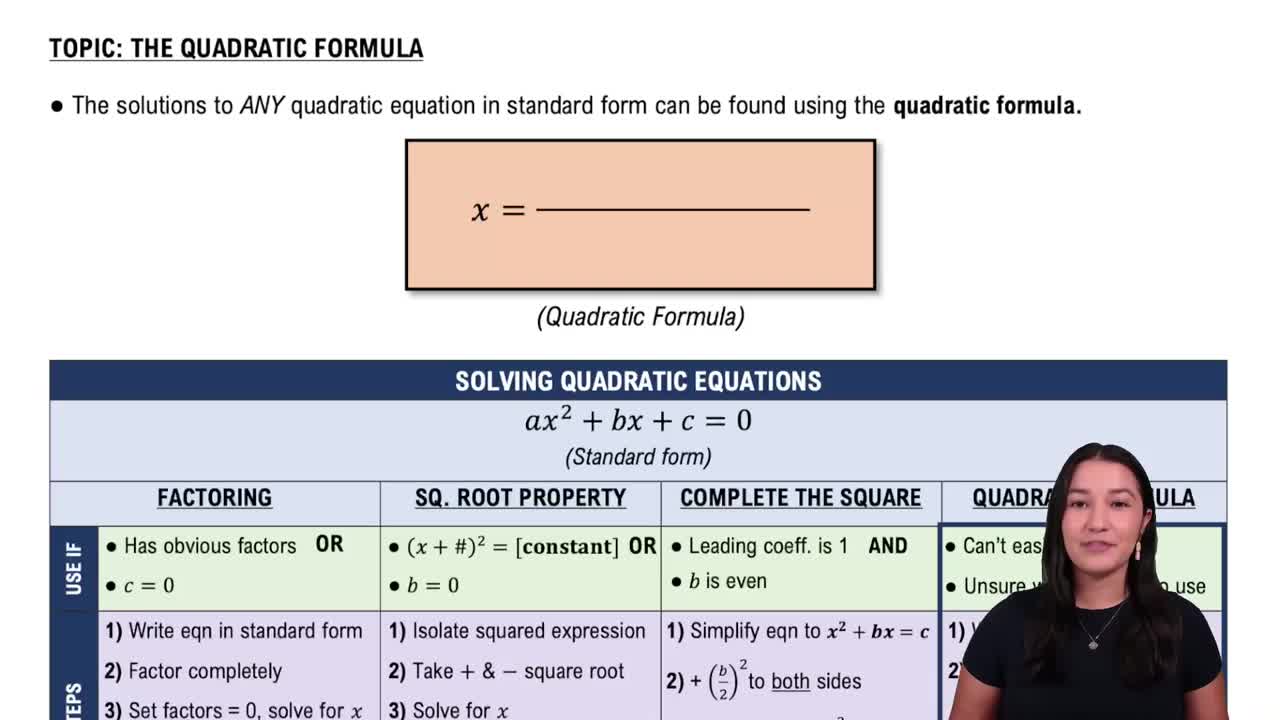Here are the essential concepts you must grasp in order to answer the question correctly.
Direct Proportionality
Direct proportionality means that two quantities increase or decrease in tandem. In this context, the distance fallen by a body is directly proportional to the square of the time of the fall, which can be expressed mathematically as d = k * t^2, where d is distance, t is time, and k is a constant of proportionality.
Recommended video:
Maximum Turning Points of a Polynomial Function
Quadratic Relationships
Quadratic relationships involve equations where the variable is raised to the second power. In this problem, since distance is proportional to the square of time, the relationship can be modeled by a quadratic equation, allowing us to predict distances for different time intervals by substituting values into the equation.
Recommended video:
Solving Quadratic Equations Using The Quadratic Formula
Unit Conversion and Scaling
Unit conversion and scaling are essential for solving problems involving different measurements. In this case, understanding how to scale the distance fallen from 3 seconds to 10 seconds involves using the proportionality constant derived from the initial condition (144 feet in 3 seconds) to find the new distance, ensuring consistent units throughout the calculation.
Recommended video:
Square Roots of Negative Numbers
 Verified step by step guidance
Verified step by step guidance Verified Solution
Verified Solution



 5:56m
5:56m